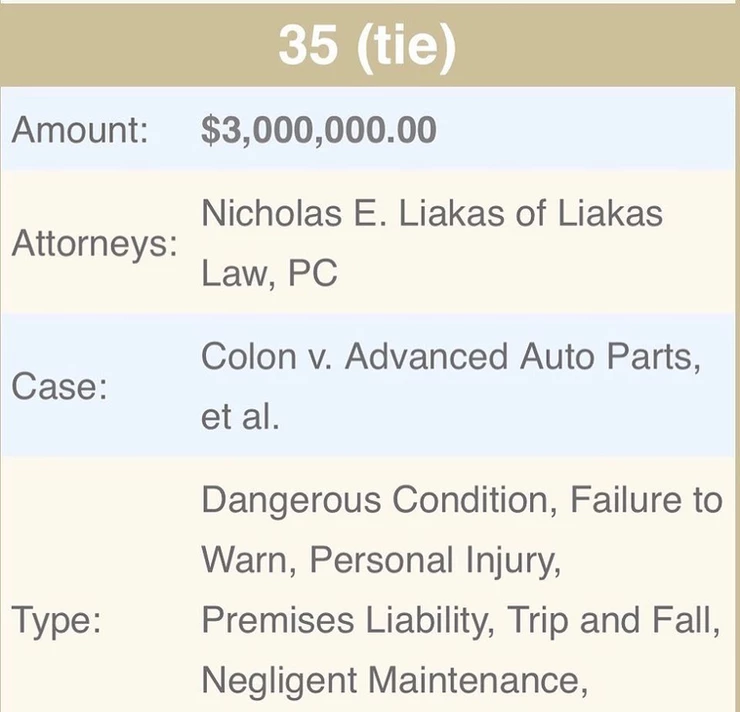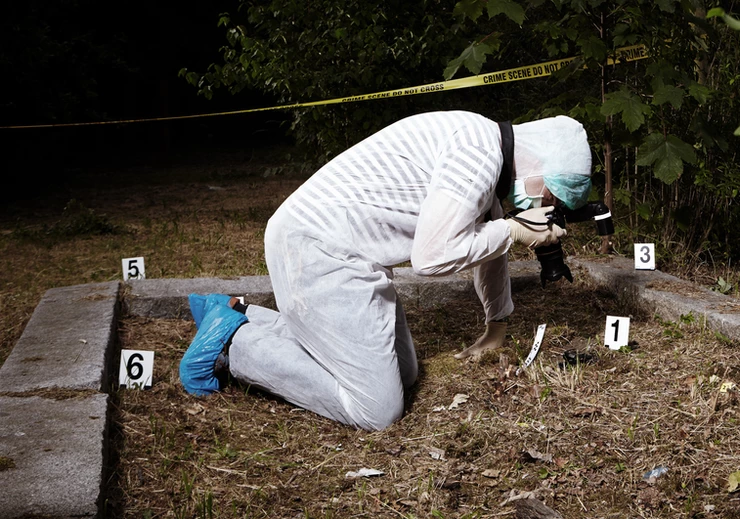Another win by the team at Liakas Law! $1.2 Million settlement secured by the team at Liakas Law.
Category: Litigation
I-Team: ‘The Defecation Room’ — Former Inmate Alleges Misuse of Specialized New York Prison Cell

Liakas Law and Paul Prestia never stop fighting for your rights. No matter what your situation is or where you find yourself, we are always at the forefront of criminal justice reform and civil rights. Reach out to us if you feel you have been the victim of inhumane treatment or cruelty at the hands of our justice system.
I-Team: ‘The Defecation Room’ — Former Inmate Alleges Misuse of Specialized New York Prison Cell
The secure room, which has no running water and no bathroom facility, is used by prison staff to monitor the bowel movements of inmates suspected of hiding contraband in their body cavities.
What to Know
- A former inmate at the Elmira Correctional Facility says he was held in a contraband watch cell for 61 days with no working toilet or shower
- Christopher Johnson was in the facility after a 2014 Brooklyn murder conviction; he was acquitted at his retrial in 2018.
- The Dept of Corrections and Community Supervision says the allegations weren’t made while he was there; now it is investigating the case.
A former inmate, now cleared of murder, is accusing New York State prison employees of cruelty and abuse by locking him in a cell with no access to a working toilet for more than 2 months.
Christopher Johnson, who appealed a 2014 Brooklyn murder conviction and was acquitted at his 2018 retrial, says he was held captive for 61 days in what’s known as a “contraband watch room” during his stay in the Elmira Correctional Facility.
The secure room, which has no running water and no bathroom facility, is used by prison staff to monitor the bowel movements of inmates suspected of hiding contraband in their body cavities.
Johnson says inmates have another term for the cell: The defecation room.
“The defecation room is out of solitary confinement, but it is the contraband room where they believe you have drugs or weapons,” Johnson said. “If I had to use the bathroom, they’d give me a funnel through this little opening and I would pee in it. If I had to defecate, they would open the door and watch me defecate. As soon as I finish, they have to take the bucket for me to wipe myself. There are no showers. No brushing your teeth. Nothing. I was in an inhumane environment.”
According to disciplinary records, Johnson was twice accused of smuggling contraband during his time in New York state prisons. He disputes both charges. The second allegation, which landed him in the contraband watch room, came on Aug. 4, 2017 after an altercation with a corrections officer. According to a document entitled “Superintendent’s Review of Disciplinary Disposition, after the altercation “X-rays showed that inmate Johnson had a razor in his rectum area.”
But the records also say “the ‘metallic object’ was not recovered by security staff during the 1 on 1 contraband watch.”
Paul Prestia, a civil rights lawyer representing Johnson, said it’s not credible that a piece of sharp metal detected by an X-ray would fail to be expelled during Johnson’s two months of isolation –- in which guards constantly monitored his bowel movements.
“It’s more than inhumane. It’s something you wouldn’t see in a third world jail,” Prestia said.
Prestia says he asked the state to hand over the X-ray film and other medical records purporting to show Johnson hiding contraband, but that so far, prison officials have failed to produce them. Johnson says he did undergo several X-rays but he disputes that they show any contraband.
“We’re going to get it eventually,” Prestia said, referring to the X-ray film. “This is the most incredibly shocking criminal justice story.”
The Department of Corrections and Community Supervision declined to answer the I-Team’s questions about the state’s use of contraband watch rooms in general and about Christopher Johnson’s case specifically.
“The allegations raised now by Mr. Johnson through [the I-Team] were never brought to the Department’s attention while Mr. Johnson was incarcerated,” wrote Thomas Mailey, a spokesman for New York’s prisons. “As the Department does whenever made aware of alleged misconduct, we have opened an investigation to determine what occurred.”
According to directives published by the Department of Corrections and Community Supervision, drug/special watch cells are only supposed to be used “for a period not to exceed 48 hours” unless a bowel movement produces the suspected contraband or two bowel movements fail to produce the suspected contraband. If an X-ray detects contraband, the state directive says “the temporary isolation may continue for up to seven days with the written approval of the Superintendent.”
The log documenting Johnson’s time in Elmira shows he was held inside a contraband watch room for the 61-day period between Aug. 4, 2017 and Oct. 3, 2017.
“I think it’s torture to keep any person in a cell for one day without a bathroom or any type of toilet facilities,” said Sen. Luis Sepulveda (D-Bronx). “I think it’s inhumane.”
Last year, Sepulveda sponsored legislation that would make it illegal to keep inmates in solitary confinement for more than 15 consecutive days. Sepulveda said the bill, called the Humane Alternatives to Long-Term (HALT) Solitary Confinement Act, would also apply to contraband watch cells –- since they also keep inmates in isolation.
A group of prison reform advocates called it “an appalling act of cowardice” when the HALT bill failed to advance to a full vote in the state legislature last year. Sepulveda says Gov. Cuomo, a Democrat, considered it too costly to force local jails across the state to retrofit solitary confinement facilities without the aid of state funding. Instead of capping stays in solitary confinement to 15 days in all prisons and jails immediately, Cuomo and legislative leaders agreed to a series of administrative reforms that include a 30-day cap on solitary confinement -– but that cap would be phased in over three years.
Sepulveda said it was the best compromise he could get.
“You know, we can go in there and shove the bill down the governor’s face and throat and if he says ‘I’m not signing this. I think it’s fiscally irresponsible,’ then we get nowhere,” Sepulveda said.
Cuomo declined to answer the I-Team’s questions about whether it is appropriate to hold inmates in solitary cells without working toilets for extended periods of time.
Another win for a Liakas Law client!
Another win for a Liakas Law client!
$1,050,000 ceiling collapse resulting in a neck injury
Liakas Law with another #Top50 result!
6 pieces of evidence for your truck accident case
You were lucky to survive such a horrific accident last week when you were hit by a tractor-trailer. The driver of the truck lost control and crossed into oncoming traffic. You were not able to get out of the way fast enough. Now, you are facing months of healing from your injuries followed by months of physical therapy. The doctor informed you that you may not regain a full range of movement and it is questionable as to when you can return to work.
Due to the nature of the accident, you more than likely have a case not only against the driver, but against the trucking company that employed him as well. However, commercial truck accident litigation can be very complicated. It often includes unique aspects that are not present in typical motor vehicle accidents. An experienced New York personal injury attorney can help you with these differences and provide guidance on your case.
Your attorney may examine and use many pieces of evidence to prove fault. This evidence will go beyond the typical police report and one or two witness statements that are useful in less complex cases. Read below for examples of the evidence your attorney may gather.
Investigation and evidence preservation
It is extremely important that your attorney conduct an immediate investigation. He or she can request a court order, such as a restraining order or an order to impound all vehicles involved in the accident as well as their contents. The items in the truck may give an indication as to the driver’s state of mind or the type of activities he was engaged in leading up to the accident. This must be done quickly in order to limit other people’s access and to preserve the evidence.
Witness statements from first responders
People that witnessed the accident will usually provide witness statements describing what they saw at the moment of the accident. Paramedics, tow truck drivers, fire personnel, and even investigating officers also need to provide witness statements describing the accident scene, the driver’s behavior, and any off-the-record remarks that they overheard. An experienced investigator can gather this evidence for your case.
Social media and employment history
The internet and social media can provide valuable information concerning both the driver and the transportation company. For example, if the driver posted a social media comment just before he lost control, it may be used as evidence of distracted driving.
This may not be the first accident or traffic infraction that the driver caused. An investigation into the driver’s employment history, driving records, experience and any other documented source may uncover a history of problems.
Black box
Most large commercial trucks are outfitted with devices that record GPS and speed. It can provide evidence that the driver was not operating within trucking regulations or company guidelines at the time of the accident.
The history of the trucking company
Check into the history of the trucking company. It may have higher than normal accident statistics, driver citations and other violations that provide evidence against the company. If the company was aware of dangerous conditions and hazardous driving habits, the court could find that it is guilty of negligence.
After an accident with a negligent truck driver, you should not bear the cost of high medical bills and lost wages. When dealing with a personal injury claim, it is important that you are aware of your rights and options.






